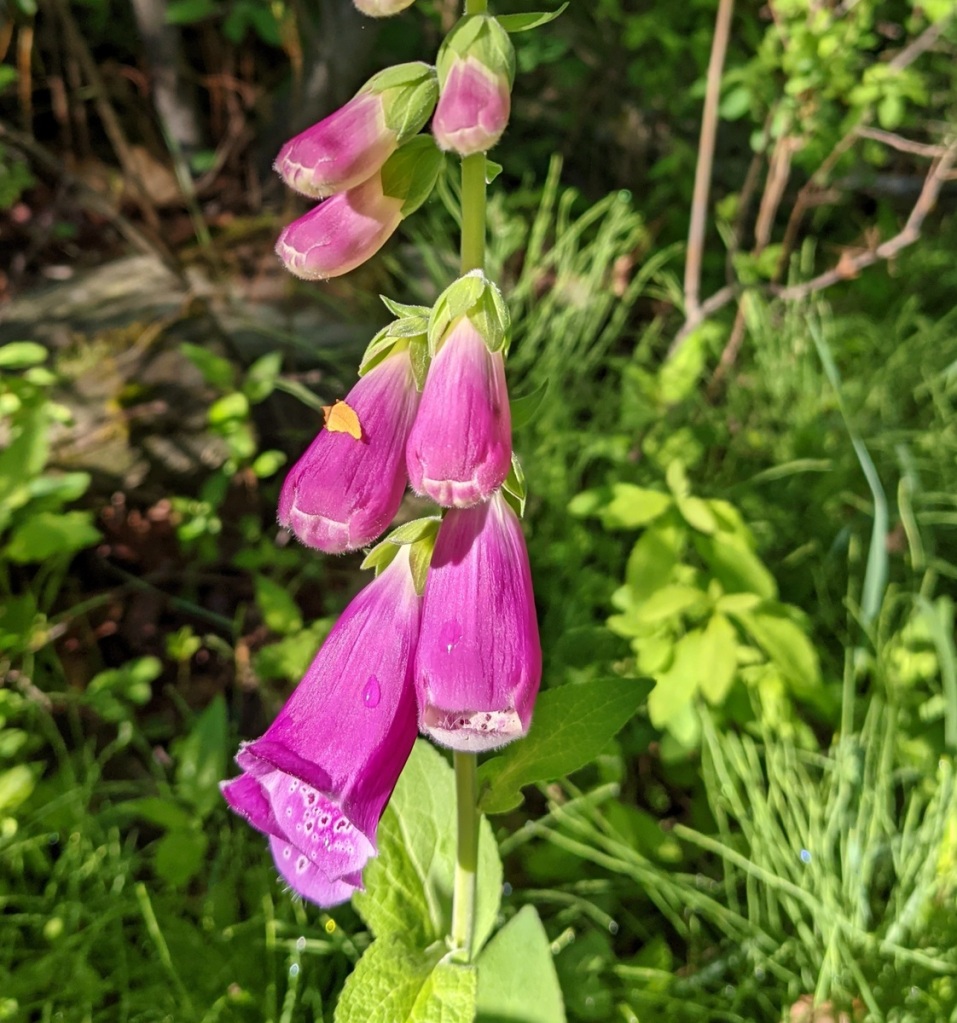
Common foxglove (Digitalis purpurea) blooms here and there along the edges of woodlands, and about mid-June is when I first start seeing it. I don’t see it in the wild that often but it seems to escape gardens and find places that suit its temperament and there it stays, sometimes forming small colonies. There were 5 or 6 plants in this group and they were beautiful. The plant is originally from Europe but it could hardly be called invasive.
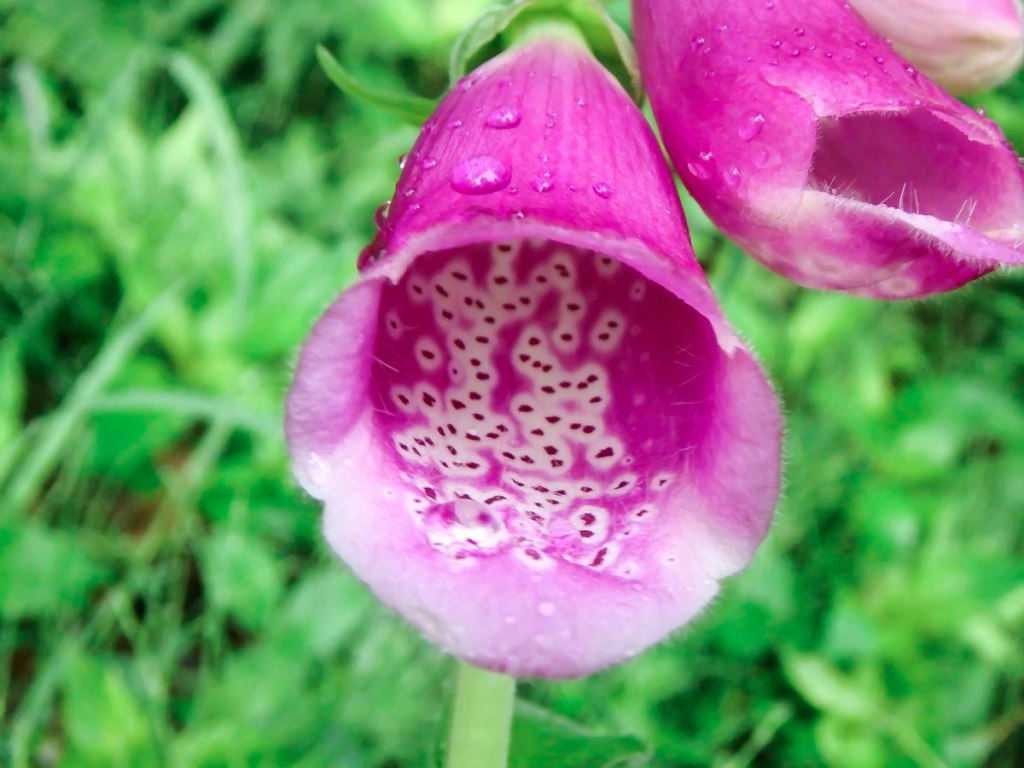
I always like to try to get a bee’s eye view of foxglove blossoms. The lower lip protrudes a bit to give bees a landing pad, and from there they follow the spots, which are nectar guides, up to the top of the blossom where they find the nectar. While the bee is busy with the nectar the anthers above it rub on its back and deposit the flower’s pollen, which will then be taken to another blossom. If successfully pollinated a foxglove plant can produce from one to two million seeds.
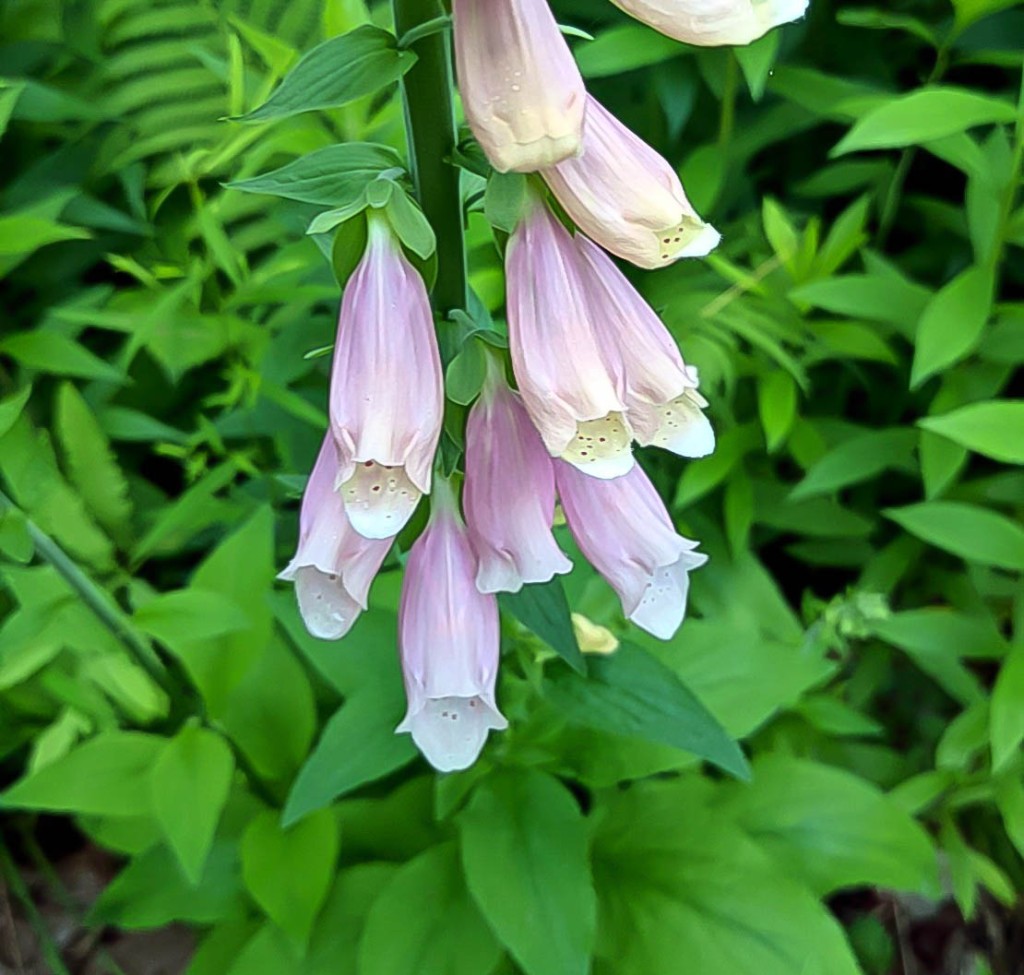
These foxglove blossoms looked quite different with their somewhat pinched openings. I don’t know if I saw them before they had fully opened or if this is some type of natural cross with this habit. In old England picking foxglove was unlucky, and its blooms were forbidden inside because it was believed that they gave witches access to the house. I tried to think back to all the times I might have picked it and find that there are maybe two. It isn’t a plant that makes me want to pick it like a daisy or a rose might.
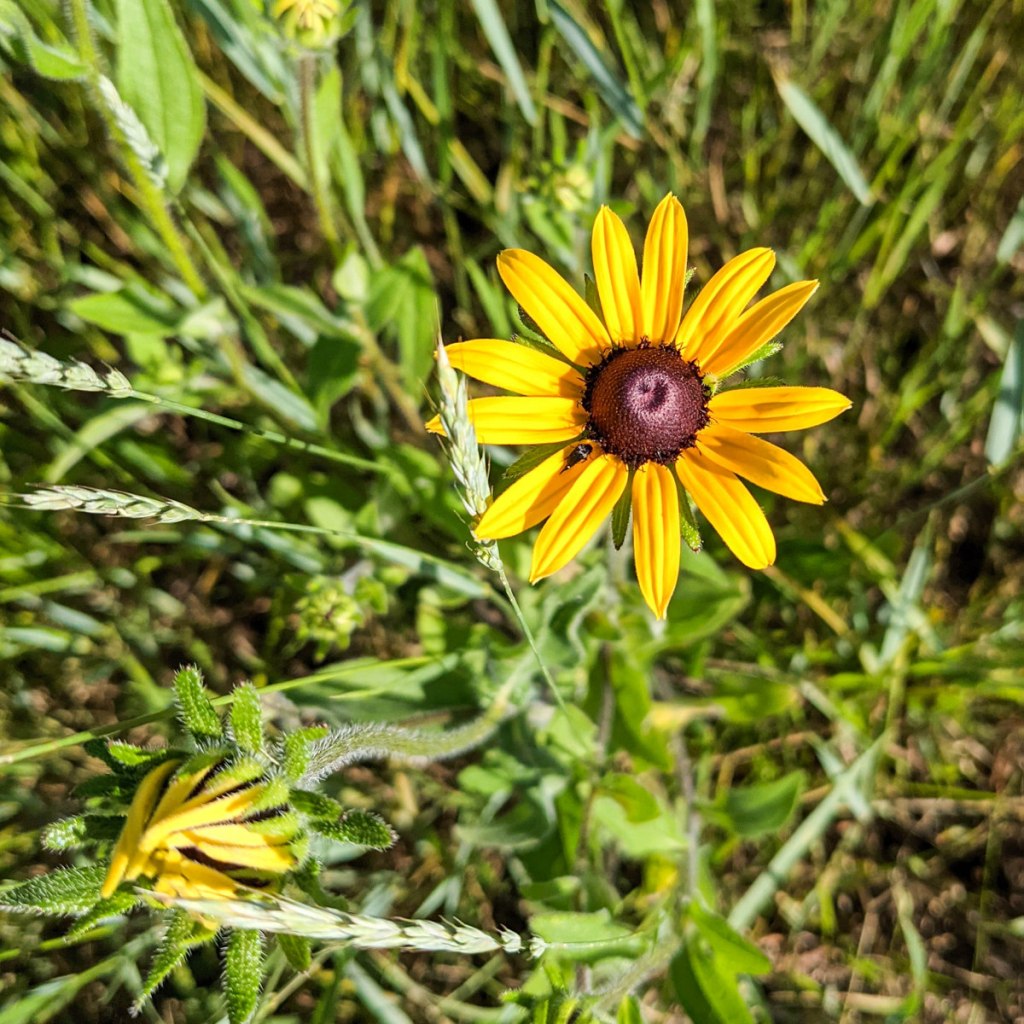
I’m always of two minds when it comes to black eyed Susans (Rudbeckia.) Though I like to see them I think of them as a fall flower, so in my mind June always seems far too early for them to appear. Are they really blooming earlier these days or have they always bloomed in June? Maybe I just wasn’t paying attention. I did notice that this one had a lot of red in its petals, but only on half the flower.
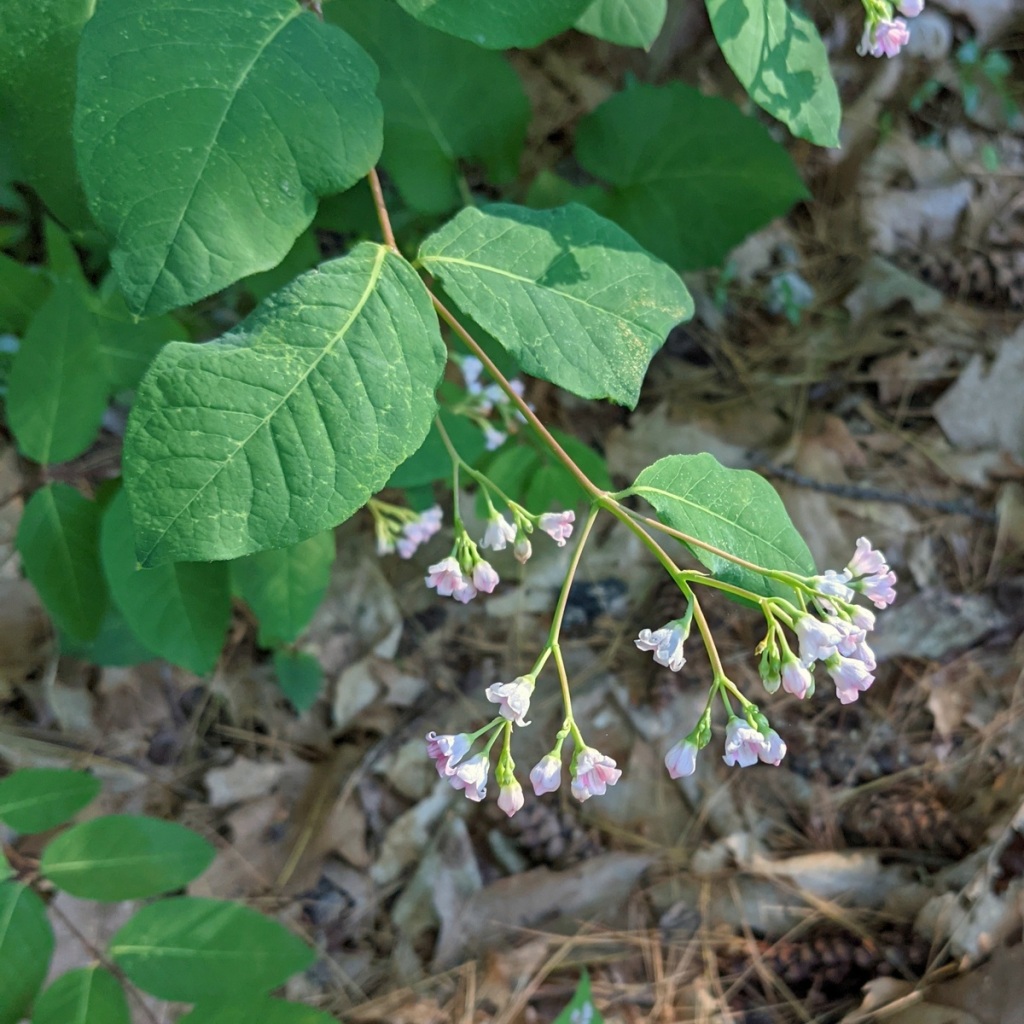
Native spreading dogbane (Apocynum androsaemifolium) is a perennial wildflower that looks like a two foot tall shrub. It spreads by both seeds and underground stems and is considered a weed in some places. I find large colonies of it growing in sandy soil along sunny forest edges. The plant in related to milkweed and many species of butterflies rely on it.
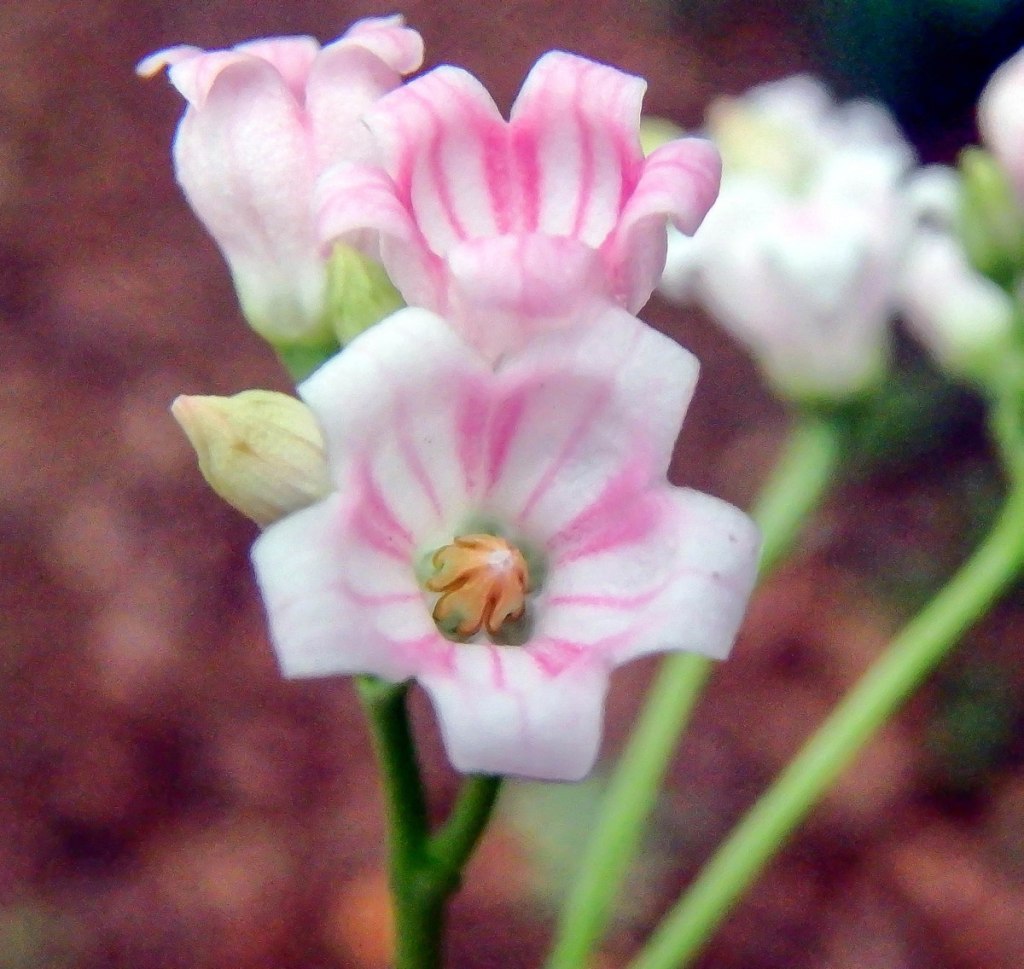
Spreading dogbane has small, light pink, bell shaped flowers that have deeper pink stripes on their insides. They are fragrant but their scent is hard to describe. Spicy maybe. This plant is pollinated by butterflies and the flowers have barbs inside that trap short tongued insects. That’s how it gets another of its common names: flytrap dogbane. Each flower is just big enough to hold a pea.
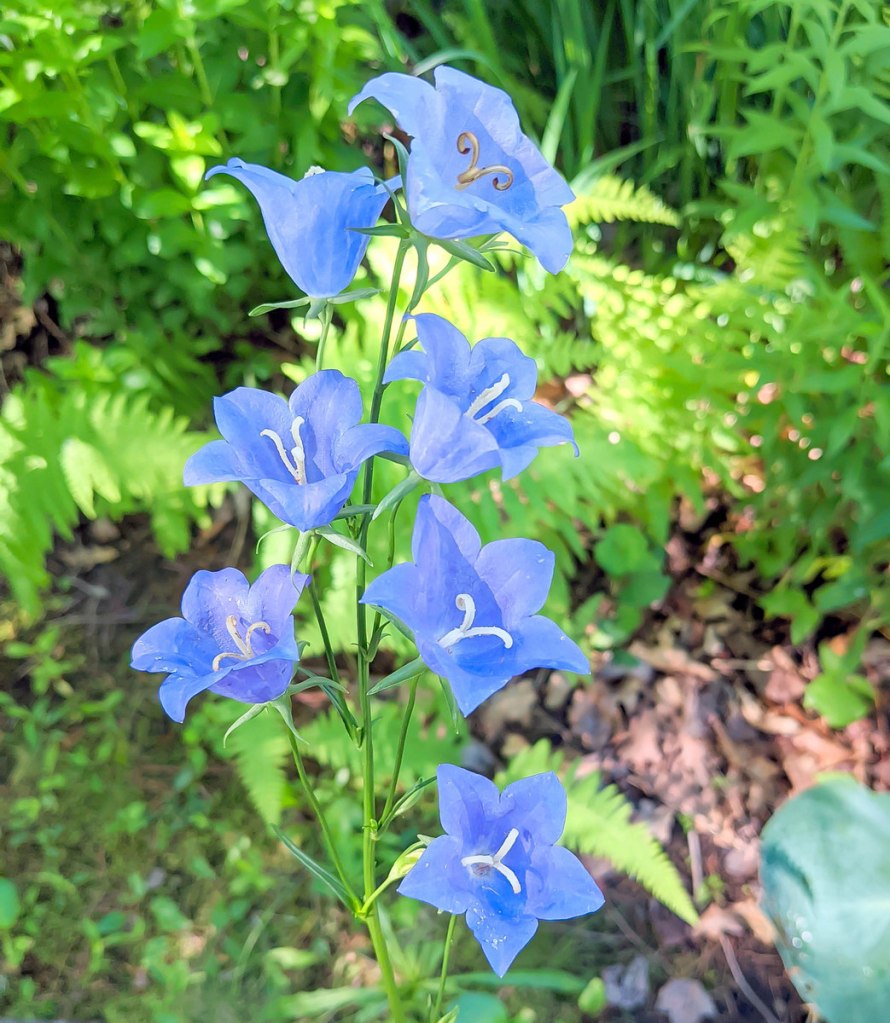
The name peached leaved bluebells (Campanula persicifolia) comes from this plant’s leaves resembling those of the peach tree. I’ve read that it grows in the Alps and other mountain ranges in Europe, but its natural habitat is woodland margins, rocky outcrops in broad-leaved woods, meadows and stream banks. It is very easy to grow-literally a “plant it and forget it” perennial and it is said to be an English cottage garden classic.
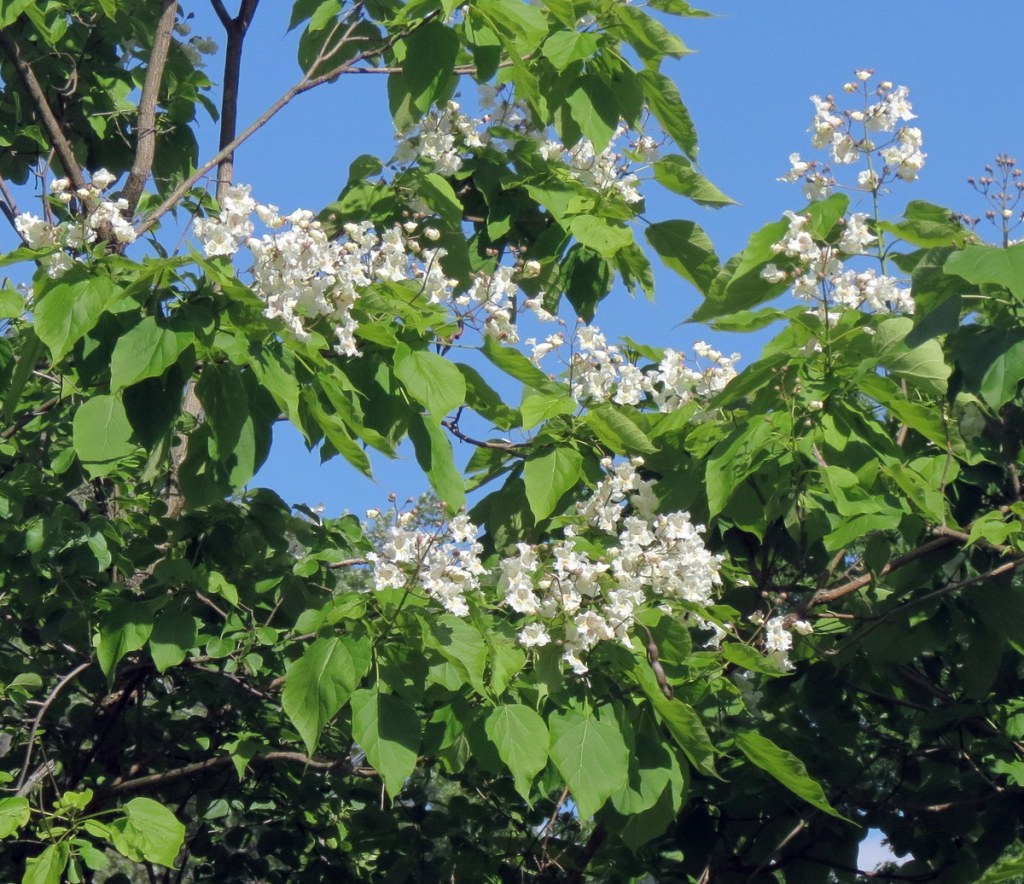
Catalpa (Catalpa speciosa) trees can be messy but they’re one of our most beautiful trees. Imagine a tree covered in large white, orchid like blossoms and you’ll have a good idea of the catalpa. This tree is used ornamentally, but it needs plenty of room because it gets very large. When I was in grade school I had to walk under a big catalpa tree to get to school and I loved seeing it bloom because that meant school was almost over for the summer. In the fall when school started again the trees were filled with what looked like string beans. Each catalpa flower becomes a long, bean like seed pod and we called them string bean trees. Luckily we were never foolish enough to eat any of the “beans” because they’re toxic. Then the leaves, as big as our heads, began to turn yellow and fall before too long. They were the biggest leaves any of us had ever seen, but we were only in second grade.
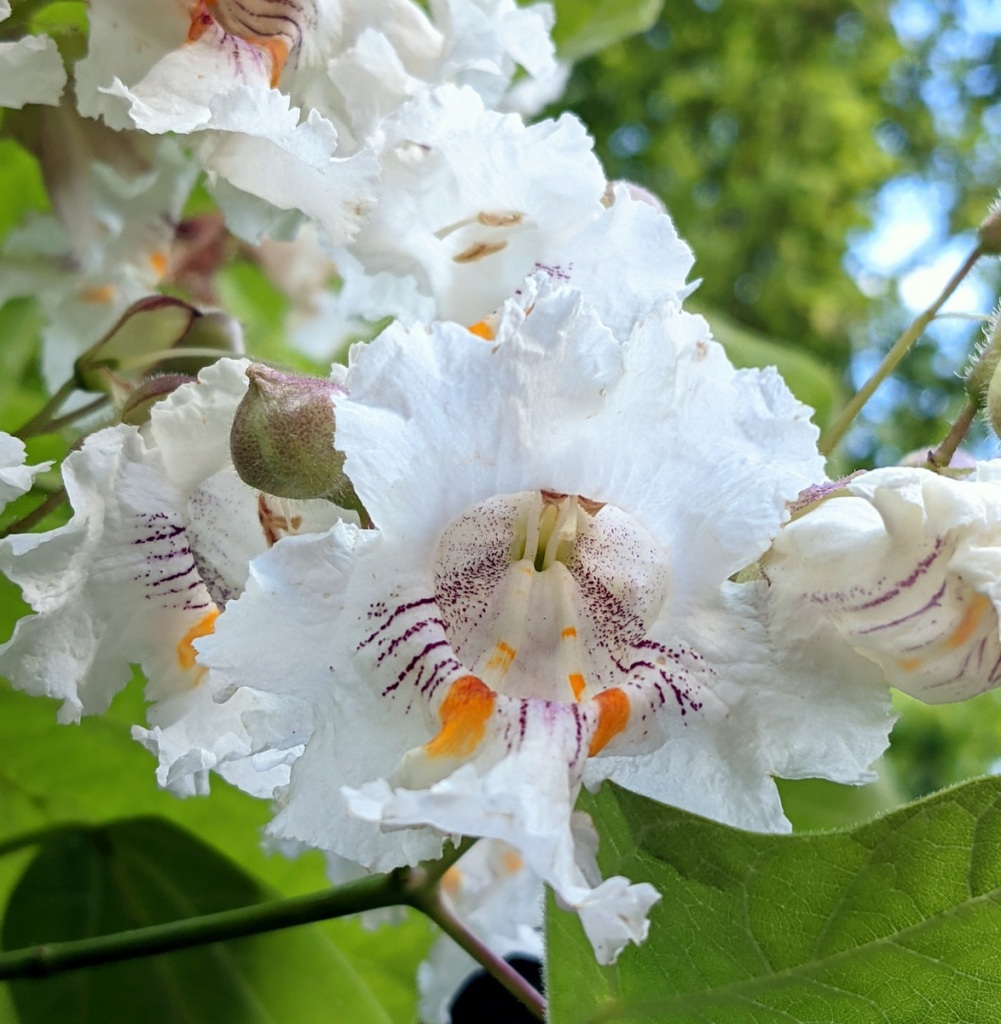
At 1-2 inches across catalpa tree flowers are large and beautiful. The word catalpa comes from the Native American Cherokee tribe. Other tribes called it catawba. Some tribes used its inner bark to make a tea which had a sedative effect and is said to be mildly narcotic. The bark tea was also used to treat malaria.

White daisy fleabane flowers (Erigeron strigosus) can appear pink in the right light, as these did. This plant will bloom right up until fall, when it will sometimes be confused with asters. I regularly find fleabane growing in sunny spots quite deep in the woods where you wouldn’t expect it to be.
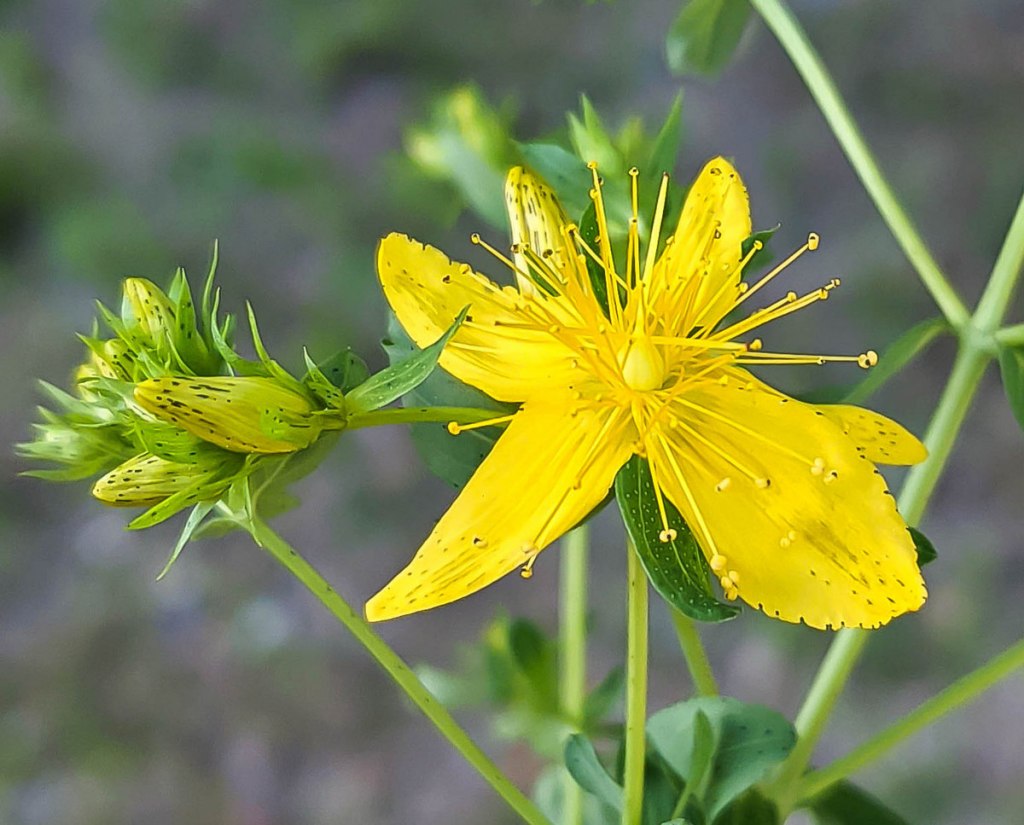
The first perforate St. John’s wort (Hypericum perforatum) flowers have appeared and they’re beautiful as always. Originally from Europe, St. John’s wort has been used medicinally for thousands of years. It likes to grow in open meadows in full sun. The leaves are yellow-green in color with scattered translucent dots of glandular tissue, and that’s where the perforatum part of the scientific name comes from. These dots can be seen better when held up to the light but you can just see them in the small leaf in the lower center, partially hidden by the flower. They do make the leaf look perforated with pin holes.
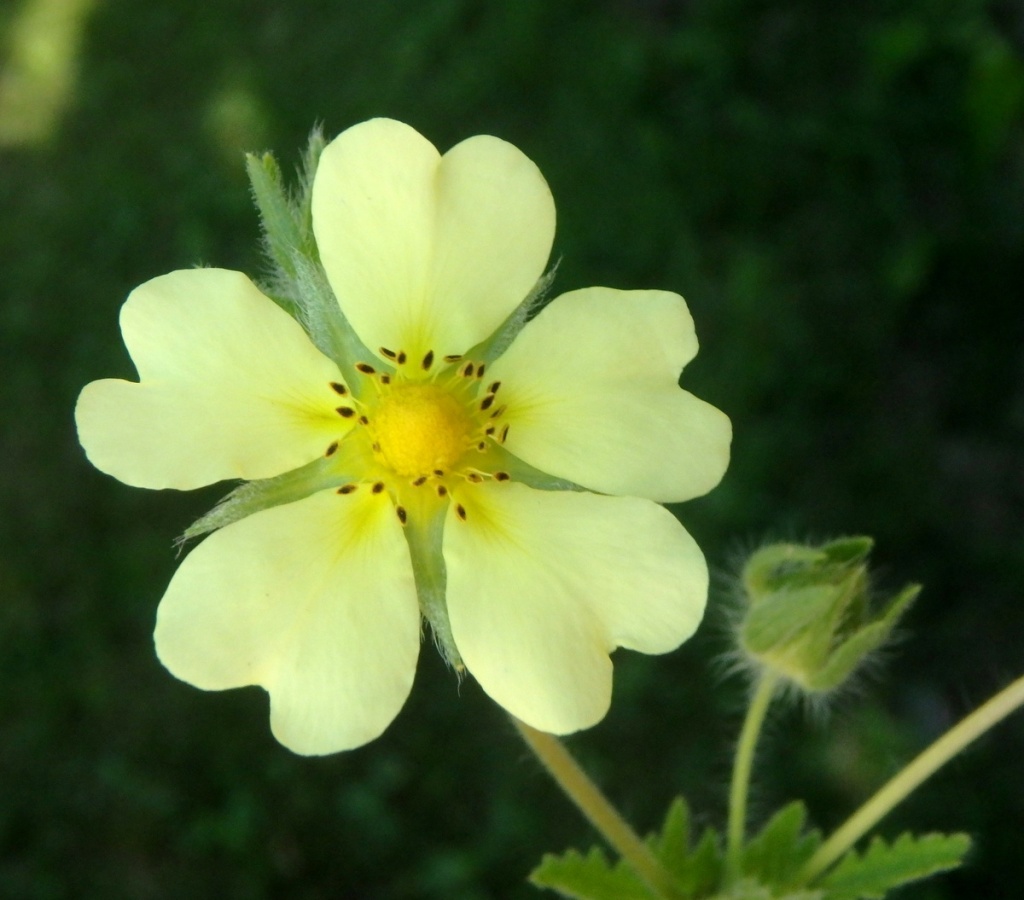
Five pale yellow heart shaped petals surround a center packed with 30 stamens and many pistils in a sulfur cinquefoil blossom (Potentilla recta.) Close to the center each petal looks like it was daubed with a bit of deeper yellow. This is a very rough looking, hairy plant that was originally introduced from Europe. It grows in unused pastures and along roadsides but it is considered a noxious weed in some areas because it out competes grasses. I like its soft, butter yellow color.
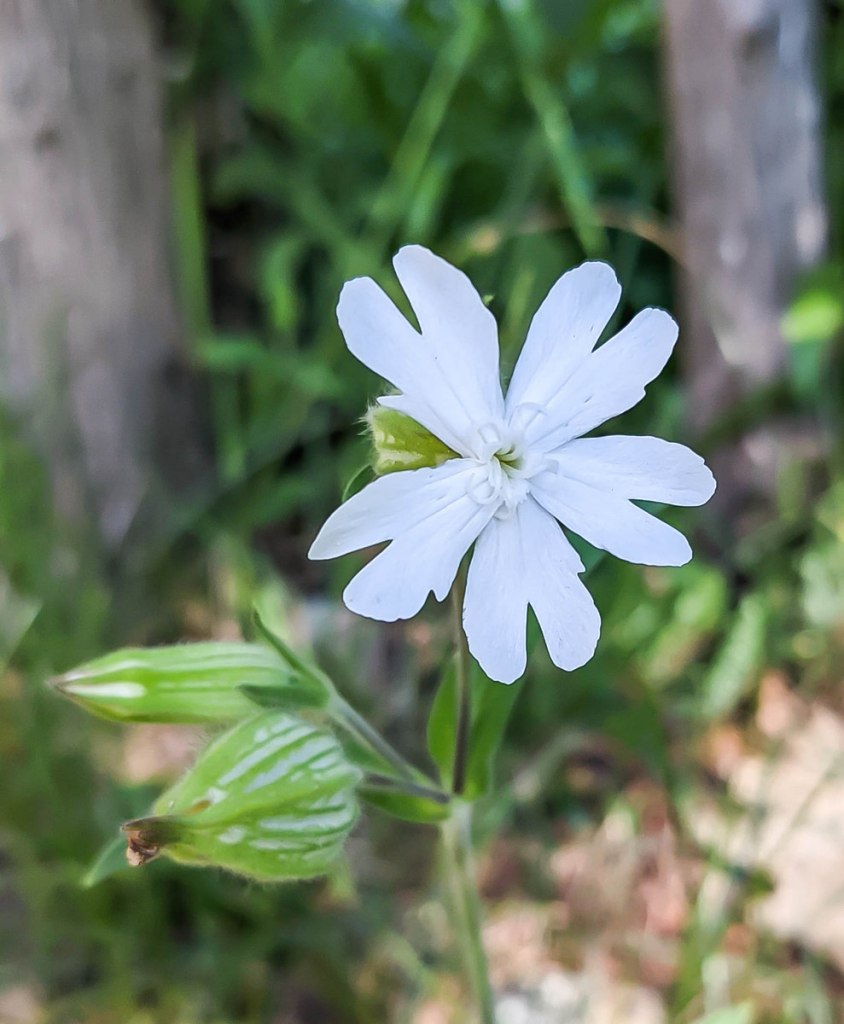
White campion (Silene latifolia) can sometimes shade towards pink but this one was pure white. You can see the deep cleft or split in the petals, which is a good way to identify it. It has 5 petals that at first glance look like 10. This plant is dioecious, meaning that male and female flowers are borne on different plants. One way to tell if a flower is male or female is by counting the veins on the bladder (calyx) behind it. Male plants have 10 parallel veins on their calyx and females have 20. This well-known plant was introduced from Europe and prefers fields and waste places with soil on the dry side.
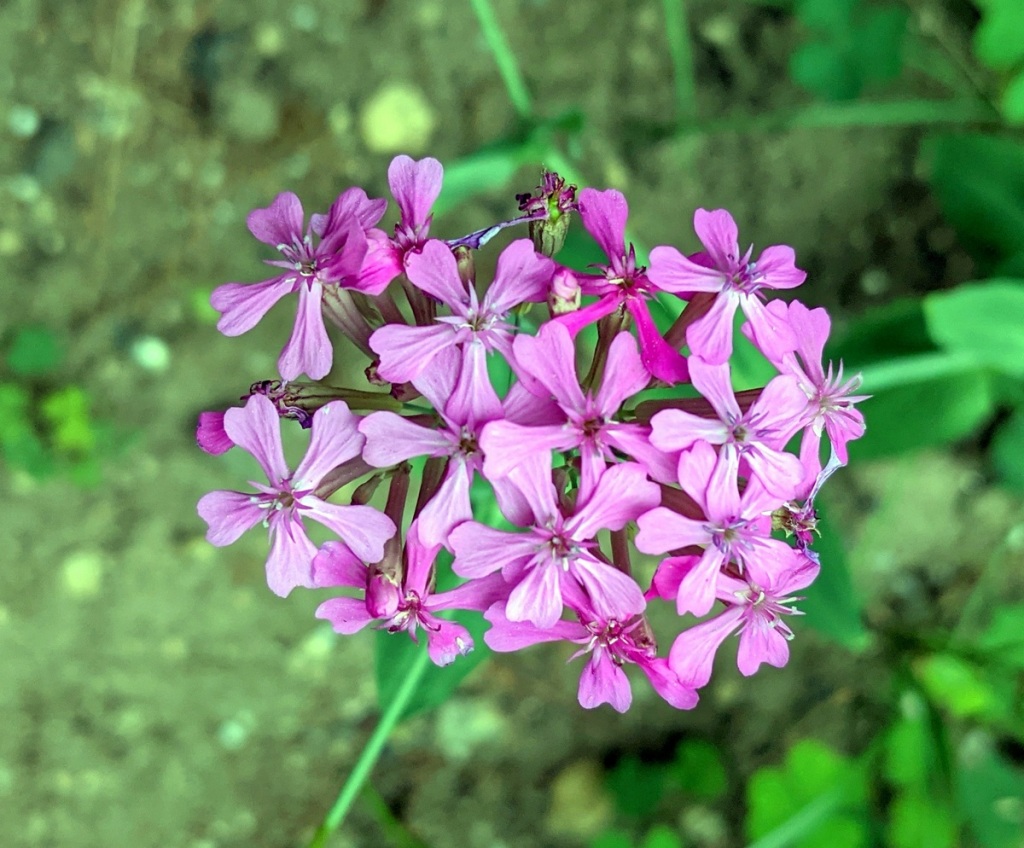
Catchfly (Silene armeria) is an unusual plant that I rarely see. I’ve seen four or five of them this year, but all in the same general area. It is originally from Europe and is also called sweet William catchfly. It is said to be an old fashioned garden plant in Europe and is supposed to be a “casual weed” in New Hampshire. The name catchfly comes from the sticky sap it produces along its stem. I’ve felt it and it is indeed quite sticky. Small insects are said to get caught in it and I can see how that would happen. Its leaves and stems are a smooth blue grayish color and along with the small pinkish purple flowers they made for a very pretty little plant that I’m hoping to see more of.

Crown vetch (Securigera varia) has just come into bloom and I’m happy to see it because I think it’s a beautiful flower, even if it is invasive. It’s another one of those that often seem to glow with their own inner light and I enjoy just looking at it for a time. Crown vetch has seed pods look that like axe heads and English botanist John Gerard called the plant axewort and axeseed in 1633. It is thought that its seeds somehow ended up in other imported plant material because the plant was found in New York in 1869. By 1872 it had become naturalized in New York and now it is in every state in the country except Alaska.
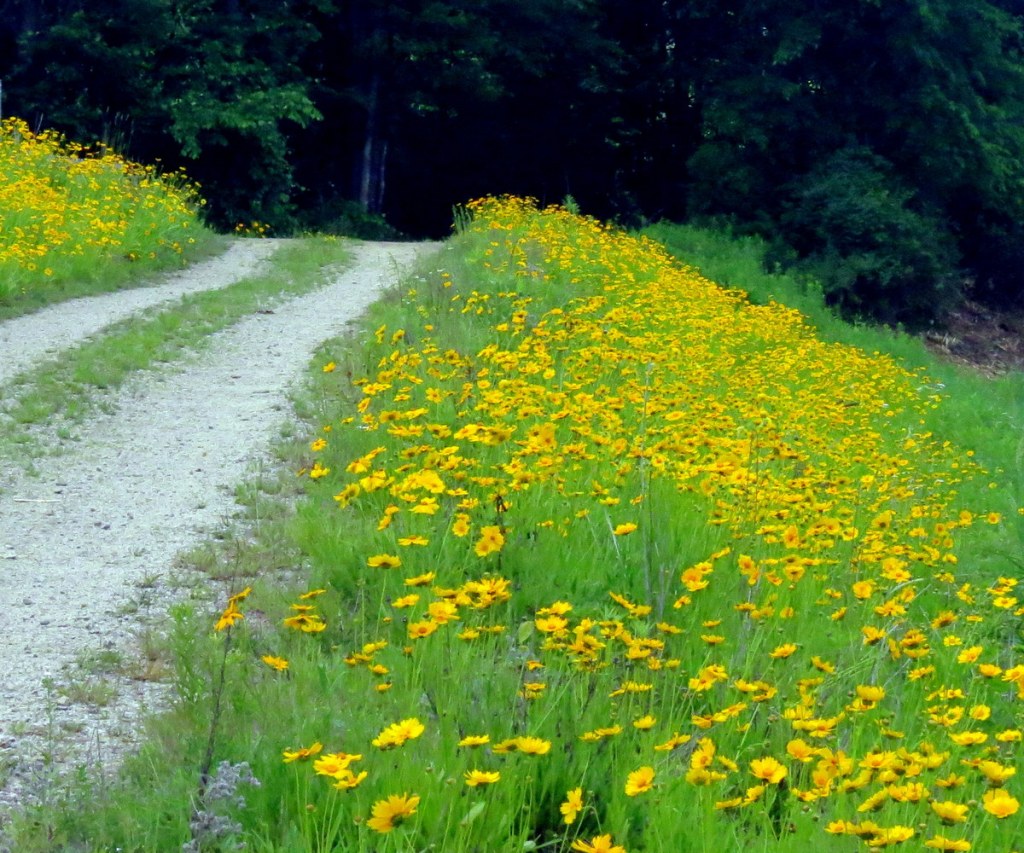
Tickseed coreopsis (Coreopsis lanceolata) gets its common name from the way that its seeds cling to clothing like ticks. The plant is also called lance leaved coreopsis and that is where the lanceolata part of the scientific name comes from. Coreopsis is found in flower beds as well as in the wild and can form large colonies if left alone. It is often used to stabilize embankments as can be seen in the above photo.

The pretty, bright yellow flowers of tickseed coreopsis are about an inch and a half across and stand at the top of thin, wiry stems. This is a native plant with a cousin known as greater tickseed that grows in the south. It can be a bit weedy in a garden but the seedlings are easily recognizable and usually pull easily.
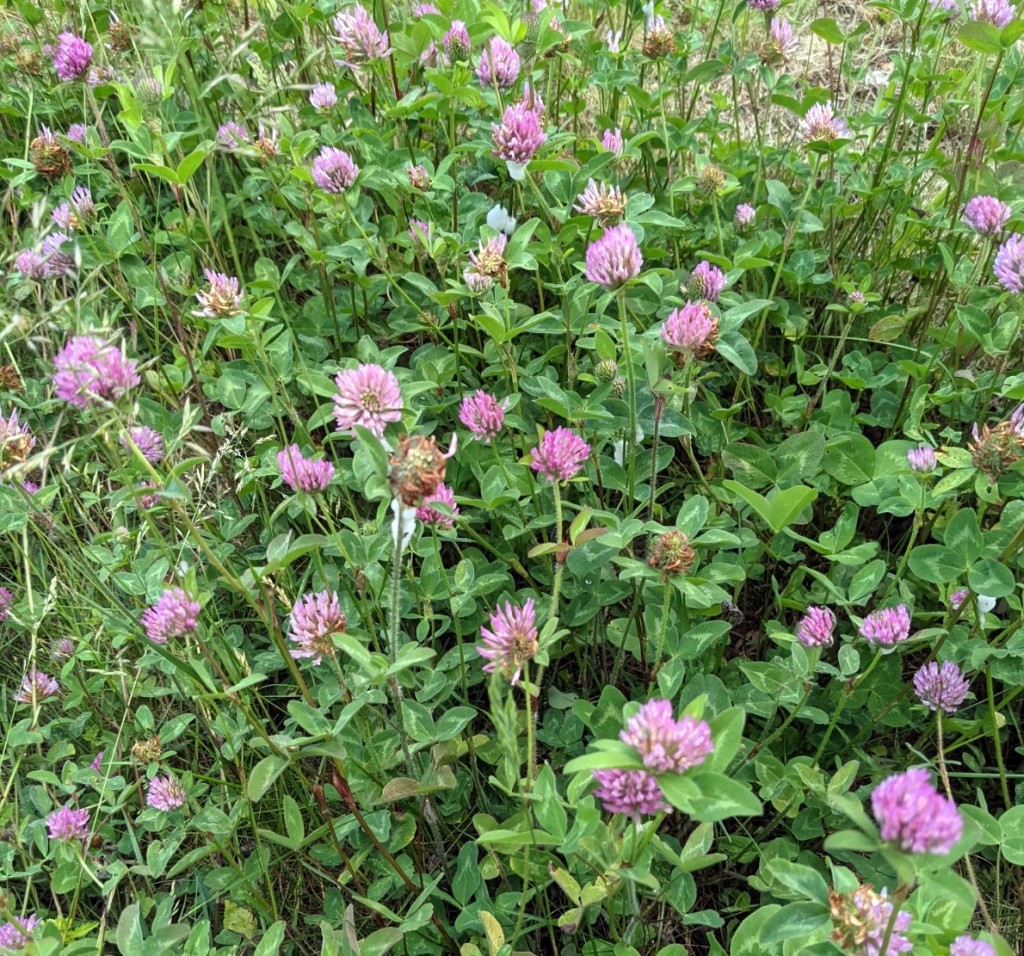
Red clover is doing well this year and I’m very happy that I can say that, but it wasn’t always so; there was a time when I cursed this plant. It was an ugly, ungainly weed that was hard to pull, looked terrible when it was mowed or weedwhacked, and quickly made a garden look there was no gardener tending it.
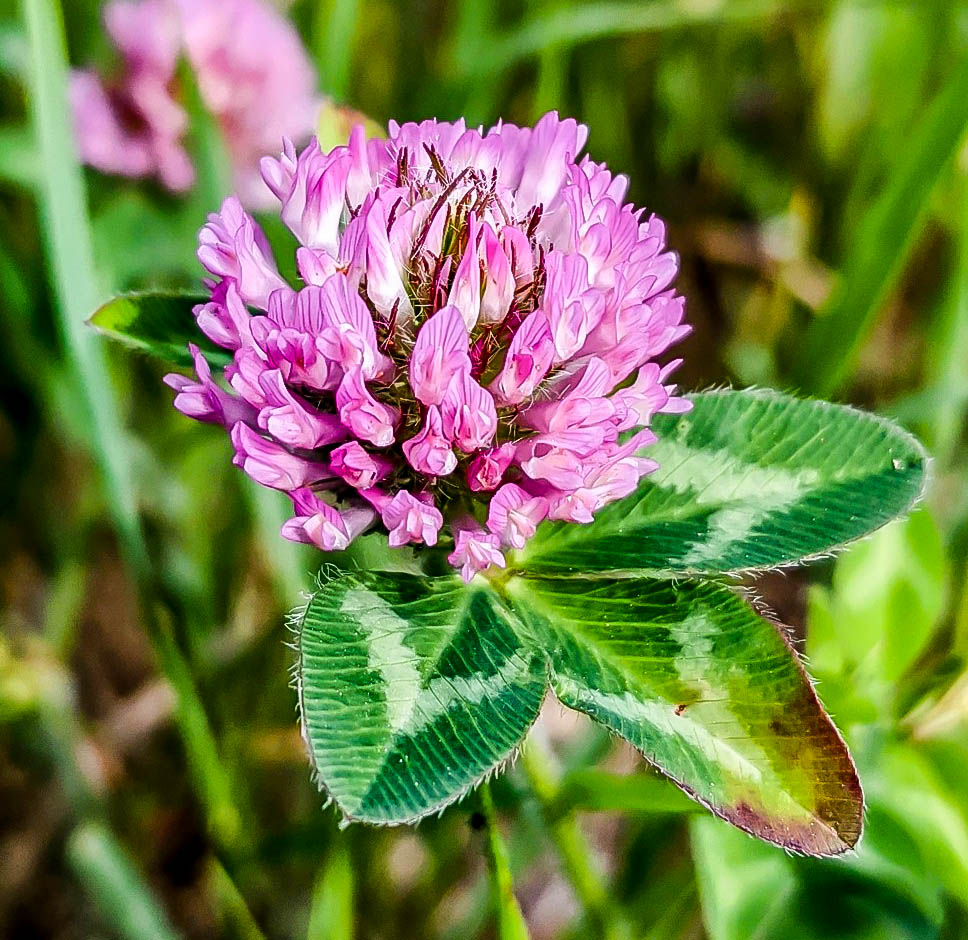
But then one evening a single ray of sunlight fell on a red clover blossom at the edge of the woods and I went and knelt by it to take its photo. I think it was really more practice photo than anything; after all who would want to see a photo of an ugly old weed? But then I saw the beauty of each tiny orchid like flower, and how each one had an inner light shining out from it. I have never looked down on it or any other plant or flower since. Telling this story always reminds me of the words from the hymn Amazing Grace: “I once was blind but now I see,” because that’s truly the way it happens. Your eyes can be opened to whatever they fail to see in a millisecond, even when what they fail to see is you.
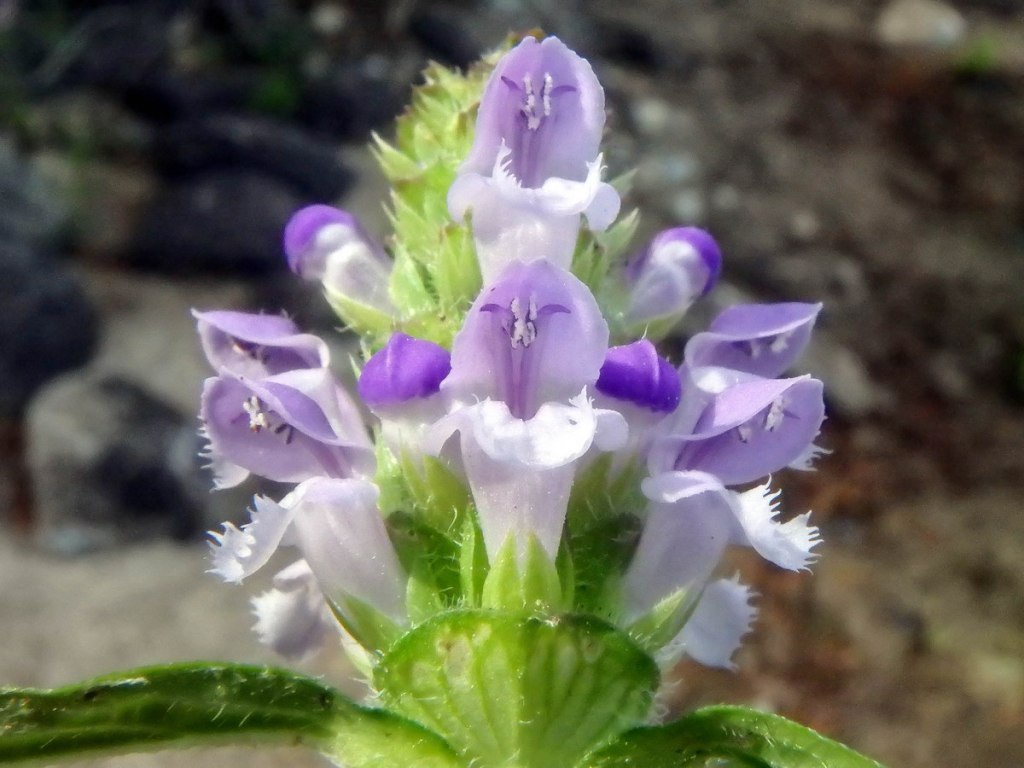
Heal all (Prunella lanceolata) is also called self-heal and has been used medicinally since ancient times. It is said to cure everything from sore throats to heart disease, and that’s how it got its common name. Some botanists believe that there are two varieties of the species; Prunella vulgaris from Europe, and Prunella lanceolata from North America. Native Americans drank a tea made from the plant before a hunt because they believed that it helped their eyesight. To me heal all flowers always look like they’re shouting “Yay!” Why would they be so happy? Because they’re alive. They exist. All of nature is in a state of ecstasy because it simply is. That’s another lesson nature tries to teach us, but we’re usually far too busy to pay attention.
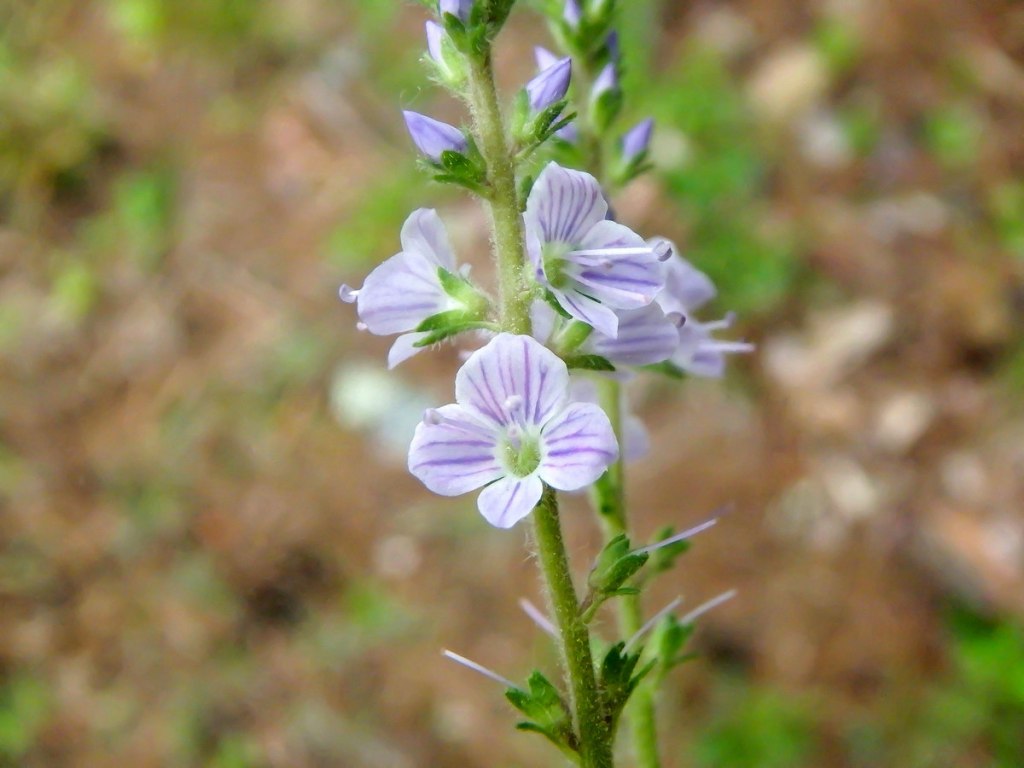
Common speedwell (Veronica officinalis) is another common weed, maybe not hated but certainly stepped on by many a heel because of its ground hugging, sprawling habit. But as is often the case when you really look at some neglected thing, you find beauty. Common speedwell has been used medicinally for centuries in Europe and its leaves were used as a tea substitute there. Though it isn’t really invasive it is considered an agricultural weed. It sends up its vertical flower stalks in May and each flower stalk (Raceme) has many very small blue flowers streaked with dark purple lines. They’re beautiful little things, but they sure aren’t easy to photograph.
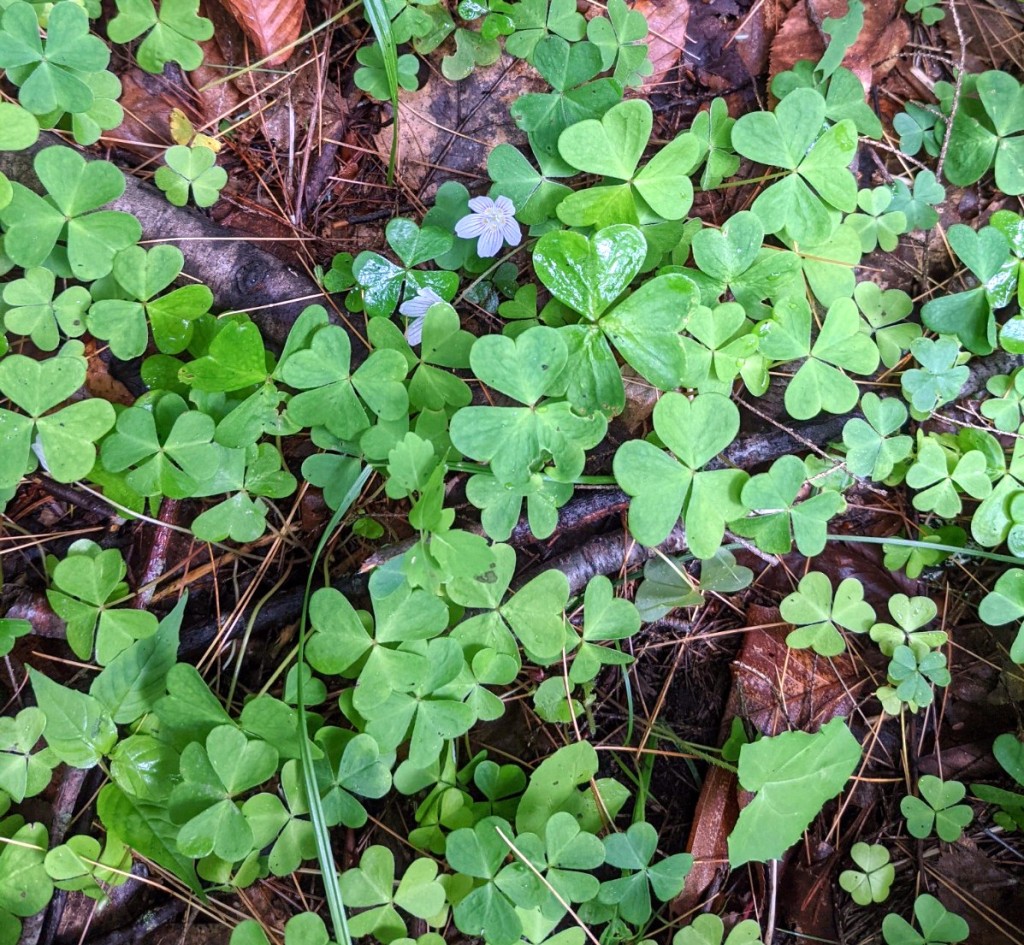
The aspirin size flowers of white wood sorrel (Oxalis montana) are smaller than the leaves and hide beneath them, so you have to look closely to find them. Looking for them always makes me feel like I’m sneaking up on a rabbit or a deer or some other shy creature.

It’s worth looking closely, because white wood sorrel flowers are pin striped and very beautiful. This plant is scarce here; I’ve seen it in only two places.
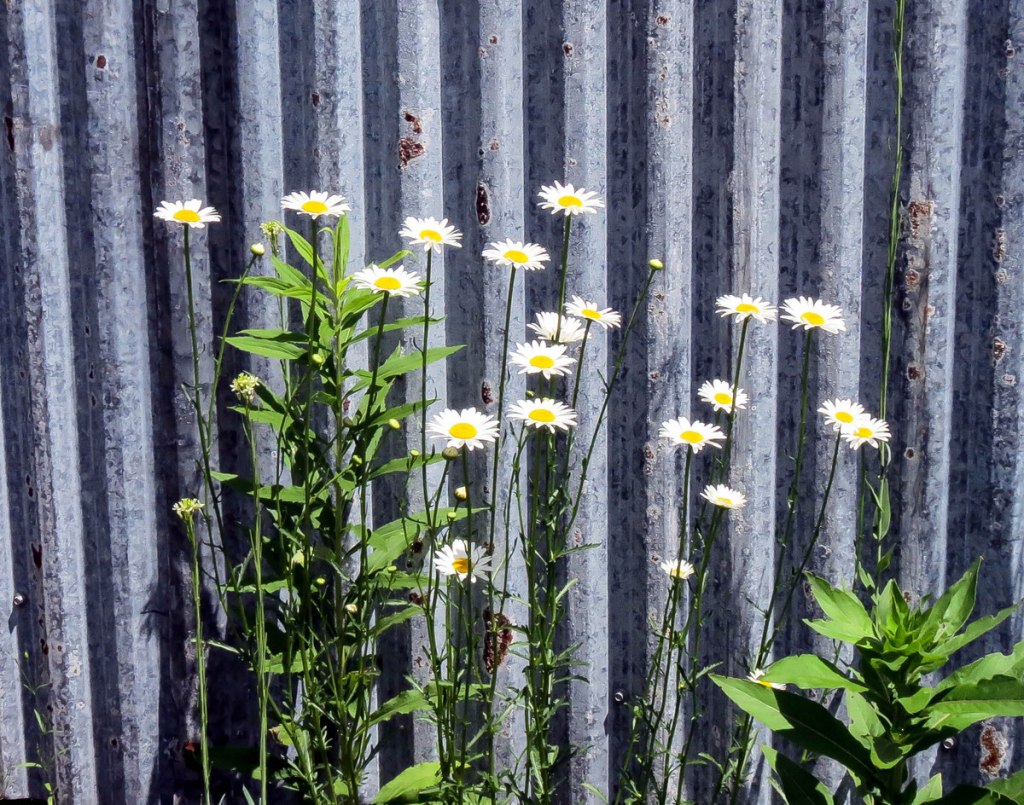
This shot of ox-eye daisies is for Ginny, who a couple of posts ago admired the way they stood so straight and tall compared to garden variety Shasta daisies, which flop all around. These examples were some of the tallest I’ve ever seen, and stood ramrod straight. They proved her point perfectly.
Weeds are flowers too, once you get to know them. ~A.A. Milne
Thanks for coming by. Happy Summer!













